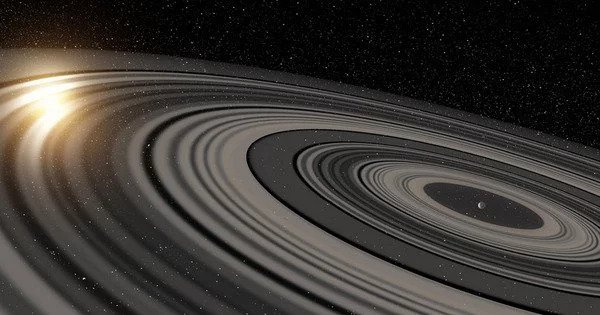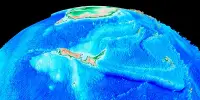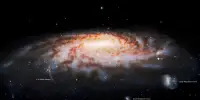The four gas giants in our Solar System – Jupiter, Saturn, Uranus, and Neptune – all have ring systems. Saturn’s rings are the most well-known and prominent, but the other three gas giants also have less extensive ring systems. In addition to these four planets, some smaller bodies in our Solar System, such as the dwarf planet Haumea and the centaur Chariklo, have also been discovered to have their own ring systems.
A new ring system has been discovered around a dwarf planet on the outskirts of the Solar System by scientists. The ring system orbits much further out than is typical for other ring systems, calling current theories about how ring systems form into question.
The ring system revolves around Quaoar, a dwarf planet roughly half the size of Pluto that orbits the Sun beyond Neptune. An international team of astronomers made the discovery, which was published in Nature, using HiPERCAM, an extremely sensitive high-speed camera developed by scientists at the University of Sheffield and mounted on the world’s largest optical telescope, the 10.4 metre diameter Gran Telescopio Canarias (GTC) on La Palma.
It was unexpected to discover this new ring system in our Solar System, and it was doubly unexpected to find the rings so far out from Quaoar, challenging our previous notions of how such rings form.
Professor Vik Dhillon
The rings are too small and faint to see in a photograph. The researchers discovered Quaoar by observing an occultation, which occurs when the light from a background star is blocked by Quaoar as it orbits the Sun. The event lasted less than a minute, but it was preceded and followed by two light dips, indicating a ring system around Quaoar.
Ring systems are relatively uncommon in the Solar System; aside from the well-known rings around the giant planets Saturn, Jupiter, Uranus, and Neptune, only two other minor planets, Chariklo and Haumea, have rings. All of the previously known ring systems are able to survive because they orbit close to the parent body, so tidal forces prevent the ring material from accreting and forming moons.
Discoveries like these are exciting for scientists and the public alike, as they provide new insights into the workings of our Solar System and the formation of planets and other celestial bodies. If a new ring system were to be discovered in our Solar System, it would likely generate a lot of interest and attention.

What makes the ring system around Quaoar remarkable is that it lies at a distance of over seven planetary radii – twice as far out as what was previously thought to be the maximum radius according to the so-called `Roche limit’, which is the outer limit of where ring systems were thought to be able to survive. For comparison, the main rings around Saturn lie within three planetary radii. This discovery has therefore forced a rethink on theories of ring formation.
“It was unexpected to discover this new ring system in our Solar System, and it was doubly unexpected to find the rings so far out from Quaoar, challenging our previous notions of how such rings form,” said Professor Vik Dhillon of the University of Sheffield’s Department of Physics and Astronomy. Because the event lasted less than a minute and the rings are too small and faint to see in a direct image, the use of our high-speed camera, HiPERCAM, was critical to this discovery.
“Everyone learns about Saturn’s magnificent rings as a child, so hopefully this new discovery will provide more insight into how they formed.”
















